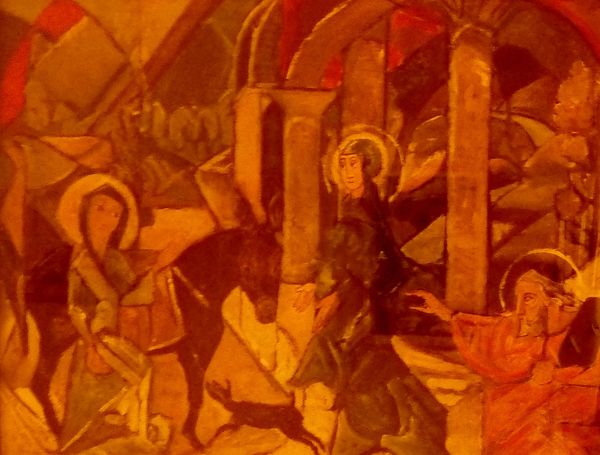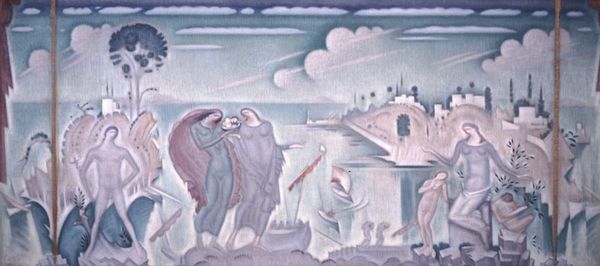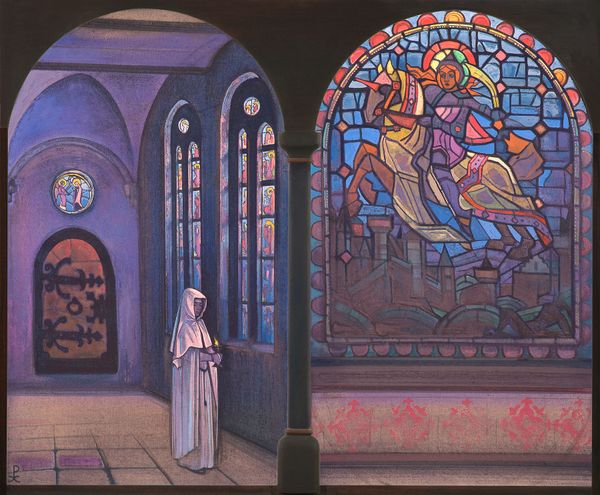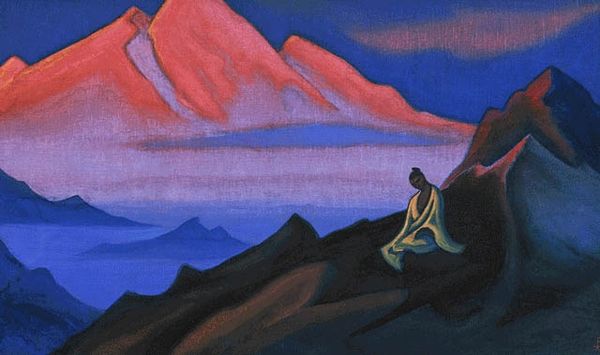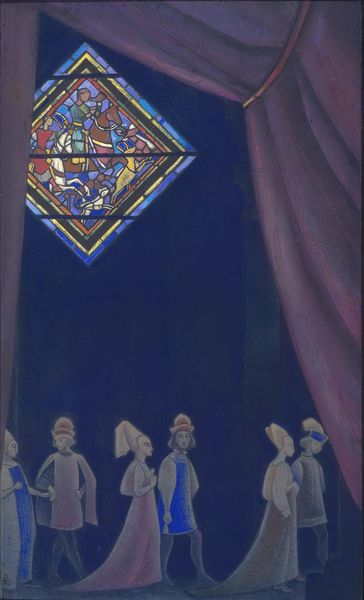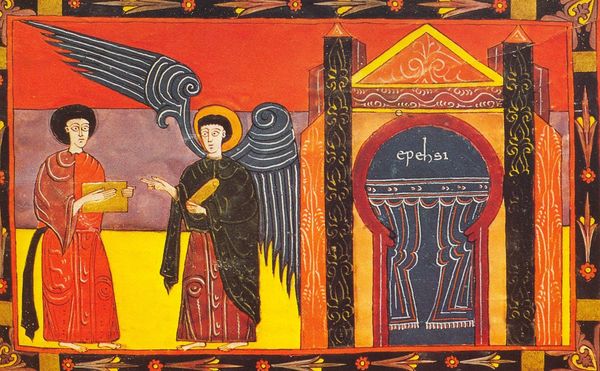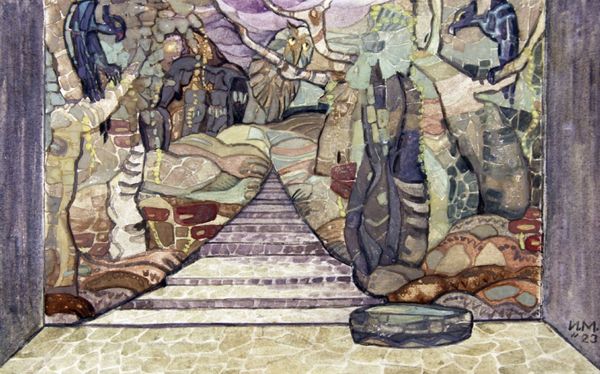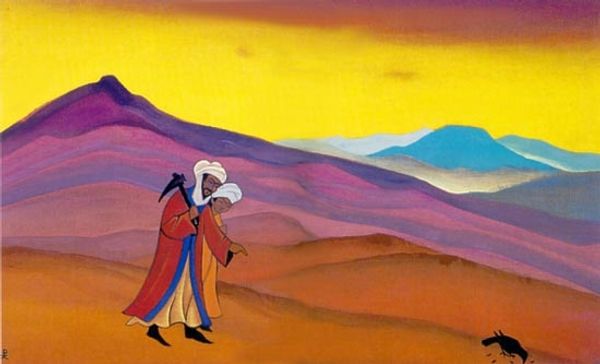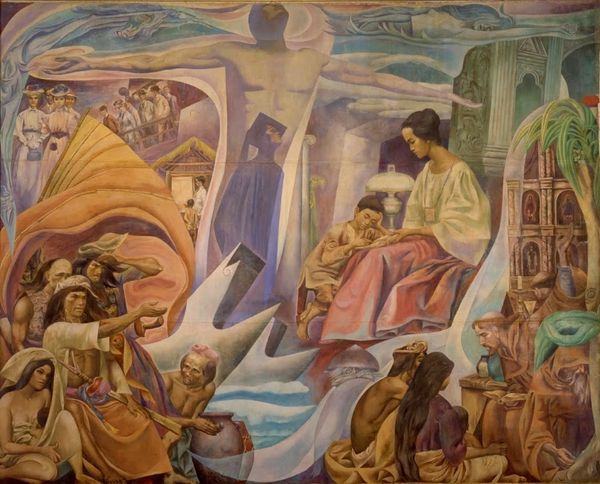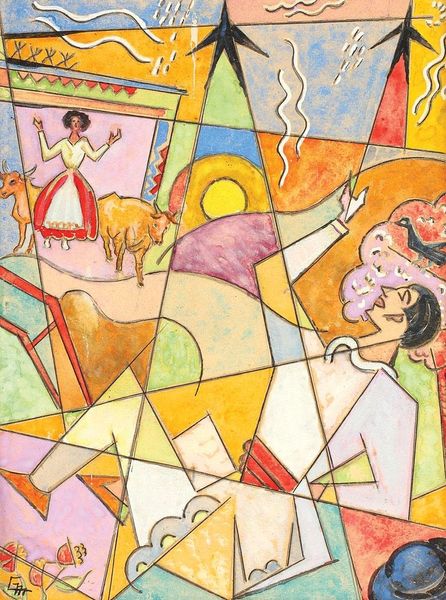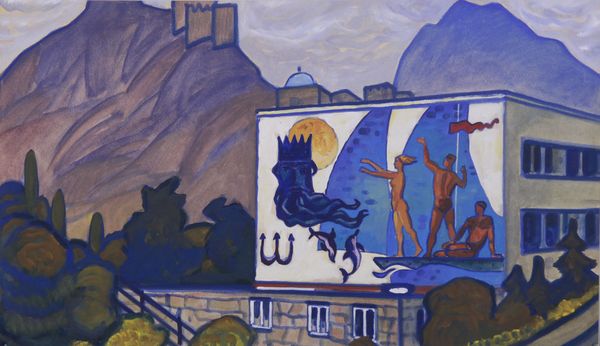
Dimensions: 122 x 91.4 cm
Copyright: Public domain
Curator: What a striking scene, the temperature of this palette feels rather cool to the touch. Editor: Indeed. This is Nicholas Roerich's 1946 tempera painting, "Messenger," currently housed in the State Museum of Oriental Art in Moscow. It’s steeped in symbolic representation. Curator: I can sense a strong symbolic program here. I'm captivated by how the artist utilizes a central architectural portal—a literal gateway—to create depth. The composition directs our focus from the inner, shadowed space towards a radiant, mountainous landscape beyond. The color story here is also quite potent, too, as he relies heavily on analogous and complementary schemes, like purples with pinks, yellows with blues. Editor: Roerich's life and work were deeply interwoven with spiritualism and theosophy. This particular painting likely reflects his interest in Eastern philosophies and his search for enlightenment. He was a leading intellectual figure who established several cultural movements aimed at creating peace through culture. Curator: Speaking of, do you feel a connection between the landscape elements, especially that mountain, and an overall sensation of striving or climbing? Are there potential metaphors for ascendance at play here? Editor: Roerich often used the motif of the mountain in his paintings as an emblem of spiritual height. Here, one might see the mountainous vista as the promise of what lies ahead in the messengers’ journey. Remember, too, that Roerich personally led several expeditions to the Himalayas; those majestic landscapes were deeply meaningful to him. But more pragmatically, I also wonder, considering this was painted in the wake of World War II, if the messenger isn't delivering tidings related to the conclusion of global conflict. Curator: Intriguing. That contrast of the shadowed figures framed in the light is not just an exercise in chiaroscuro. Editor: Roerich aimed to foster respect between all cultures. Perhaps this message represents a broader invitation to humanity to traverse new pathways toward understanding. Curator: A fitting final thought on the construction of this particular picture. Editor: Agreed. The painting's persistent optimism seems incredibly pertinent even now, decades after its making.
Comments
No comments
Be the first to comment and join the conversation on the ultimate creative platform.
